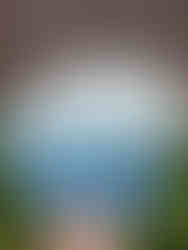On the Map, 2021: #3 Brittany Boles
- Indigo Shade Map
- Jan 25, 2021
- 4 min read
Updated: Feb 8, 2021
Brittany and I met through a Facebook group called the Indigo Pigment Extraction Methods (IPEM). She has been facilitating the private group page for over 3-years. This page has more than 6.3K members now and became a wonderful oasis for anyone enthusiastic about cultivating, practicing, and learning more about a variety of indigo. Furthermore, everyone in this group is so supportive of each other about sharing their indigo dye knowledge, indigo farming tips, etc. I hope you enjoy Brittany's exciting indigo journey in Oregon in the United States.
All photos are from Brittany and detailed credits are being listed at the end of this story.
1. Address / Location
I tend indigo in partnership with Northfork53 farm on the unceded lands of the Clatsop & Nehalem peoples (Gearhart & Nehalem Oregon).
Growing zone 8b, a temperate climate with a growing season from April-October.
2. About your Indigo and Practice
I am now entering the 5th season of tending several varietals of Persicaria tinctoria aka Japanese Indigo: Senbon, Kojyoko, Maruba, Chijimiba, and Amabe.

I was introduced to indigo plants thanks to Kara Gilbert of Vibrantvalley farm. My original Persicaria tinctoria seeds came from Rickettsindigo (Rowland Ricketts). I am greatly influenced by the practices of so many who share in the growers' community Indigo Pigment Extraction Methods (IPEM) on Facebook through my recent project Blue Biographies, a seed-to-story interview series. A few of my other major catalysts have been John Marshall, Liz Spencer (Thedogwooddyer), Iris Sullivan Daire (Dreambird.studio), Ginger Edwards (Northfork53), and the Fibershed.
My personal practice is driven by exploration and collaborative connection: the intensive novel that is extraction, the playfulness of fresh leaves crushed by hand, and the mystery of indirubin. Indigo has been a teacher, lover, and metaphor. Indigo as a dye is unique, but it is the full circle cellular cycle, the soil-seed-sprout-green-neon-blue-pigment transformation that calls to me beyond just blue cloth. The indigo metaphor is a reflection of the whole spectrum of human experience and ancestral connection.
My favorite practice is combining efforts with other local artists, farmers, growers, and teachers to co-create. Some collaborative projects include Indigofest with Iris of Dreambird studio and Natural Dye Podcast with Kelsie Doty. My indigo journey has been communal and when I say indigo has changed the way I walk around the world, I mean, the seed has taken root in my soil/soul.


3. About your Language & Culture
Language: English
Culture: My family influenced my love of plants and process as I was home-schooled from K- 10th grade. My mother and father, both avid gardeners and birders, taught me to identify, forage, and tend to plants. I was extremely privileged to spend most of my days outside roaming the forested property where I grew up. I am grateful to have had access to nature, surrounded by great rivers, mountains, lakes, and the Pacific ocean my whole life.
Ancestry: My ancestors are from Delft, Zaandam, Langnau im Emmantal, Siorrachd Obar Dheathain, and Tenochtitlán.
Click here to visit Brittany's story & Northfork 53 farm on the map!
Watch Just Being poem short film
Photo credits:
1. Ceremony cloth at @chariot.home dyed with indigo, avocado, and onion skins using hand-cut resist shapes.
2. Dried pigment from my first indigo pigment extraction in 2017.
3. Linen dyed for @shiftastoria bandanas (Plantdanas;) with indigo, marigolds, and coreopsis from the dye garden @northfork53
4. Reflection in the vat
5. Coastal Valley Blue a pigment collaboration with @vibrantvalleyfarm and @dreambird.studio for @wildpigmentproject Ground Bright series.
6. A typical studio desk, mid-multi process situation. This during an inspiring online class from John Marshall, author of Singing the Blues
7. @indigo.fest Indigo Sampler kit. Created with @dreambird.studio for Intuitive Indigo course.
8. Indirubin on silk velvet, created through @indigobluefields online instructional
9. Cleaning seeds, Persicaria Tinctoria, Chijimiba (crinkle leaf/omak ripple varietal received from @twolooms)
10. All things indigo, a flat lay.
11. 2020 end of summer, 3 rows of 4 varietals of persicaria tinctoria at @northfork53. Kojyoko, Chijimiba, Senbon, and Maruba.
11. sulfer cosmos float on a sea of indigo leaves mid extraction
12. A dye garden harvest day @northfork53. Persicaria tinctoria, marigolds, sulfer cosmos, scabiosa, and dyers chamomile.
13. Hold pigment extracted in 2019 image credit @christine_noeljames
14. Demoing pigment vs paste. Still from Intuitive Indigo videos image credit @christine_noeljames
15. Setting the Vat Table at @vibrantvalleyfarm. Still from Intuitive Indigo videos, image credit @christine_noeljames
16. Harvesting indigo in my 4 Directions(dyed with my 4 varietals of persicaria) dress, made by @lookoutandwonderland and a marigold-dyed @shift.astoria Plantdana. Still from Intuitive Indigo, image credit @christine_noeljames.
17. indigo vat "Mothers". citrus, iron and henna reducers.Still from Intuitive Indigo videos, image credit @christine_noeljames
18. Hand-rolled persicaria indigo pastels
And indigostem paper made by @DeMarinisprinting
19. Indigo pastels drying
20. Fresh Leaf Magic workbook made for Indigofest 2019 @indigo.fest. Image credit @sfawnd
21. A young persicaria tinctoria plant. Image credit @sfawnd
22. Sample from the vat at Craft of the Vat class for Indigofest 2019 @indigo.fest. Image credit @sfawnd
23. Fresh indigo puree on paper. for Indigofest 2019 @indigo.fest. Image credit @sfawnd
24. A happy vat at Indigofest 2019 @indigo.fest. Image credit @sfawnd
25. Fresh leaf dyed silks
26. Fresh leaf dyed silks
27. Woad Warriors project results from wild woad in the Siskuyou National forrest.
A collaboration with @pigmenthunter, @learning.by.hand, and kindred.craft
28. A full moon of pigment, filtering with a fresh leaf.
29. Fresh leaf stained hand
30. Woad Warriors project pigment filtering
31. Woad Warriors pigment, dry with woad flowers

























































Comments